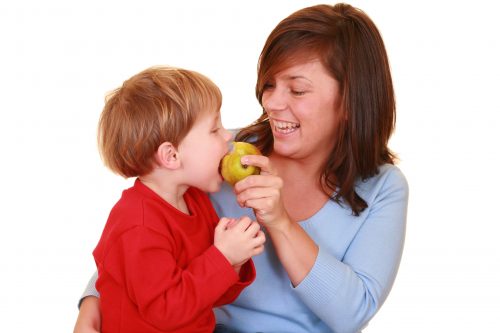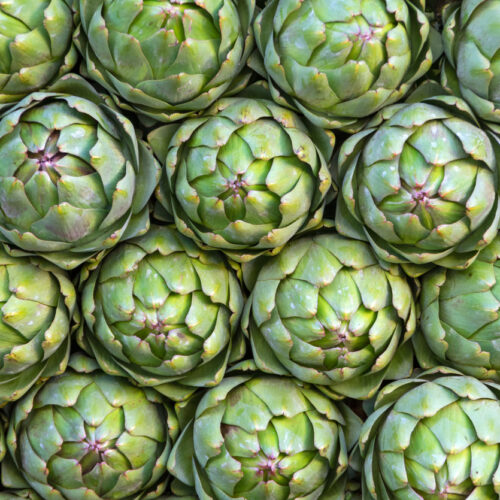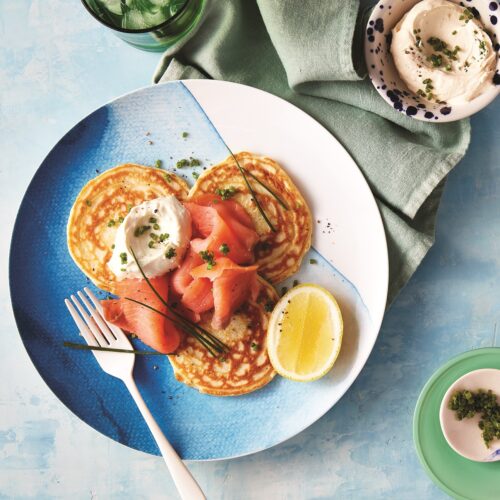
Ideas and help on getting the whole family into healthy snacking habits.
Snacking can be fraught; it’s hard to know what the good and bad choices are, let alone what’s right for our families. Busy lives, work pressures and family commitments can make the idea of ‘healthy snacking’ seem like one of those “yeah right” billboards. But, with a little planning and preparation, it can happen.
Snacking can be beneficial for the entire family. Eaten at the right time, healthy snacks can reduce the likelihood of overeating by reducing hunger, helping with weight control and suppressing food cravings. Snacks can provide a quick, nourishing solution for missed meals and refuelling after exercise. For youngsters with tiny stomachs, healthy snacks help provide the energy and nutrients needed for growth and playtime and they may improve performance at school and reduce behavioural problems. Plus, good snacking habits can help older adults maintain a healthy weight as they age.
Understanding when to snack and what to snack on will start the process of becoming a healthy snacker, but learning how to make it happen will greatly increase your chances of success. Follow these three steps and you’ll have the when, what and how covered and be well on the path to turning your family into healthy snackers!
Step 1: When to snack
A routine of meals and light snacks every 3-4 hours is ideal for many, but not essential for everyone. Mid-morning, mid-afternoon and after-dinner snacks are all fine. The key is to eat snacks at least two hours before main meals to avoid spoiling appetites, particularly in children.
A routine of meals and snacks, rather than all-day grazing, allows children to respond to their hunger cues by experiencing fullness and hunger. This is important as it teaches them to eat when hungry, not when bored or emotional.
What about if you just feel like a snack? Listen to your body. Often we think we’re hungry when we’re actually thirsty. Have a glass of water and wait five minutes. If you’re still hungry and a meal is two hours away (or more), have a snack. But if dinner is only 30 minutes away, think again, and consider planning snacks earlier in the day in future. If you’re not hungry but actually bored or a habitual snacker, then it’s time to think about solving the real problem.
Step 2: What to snack on
The best snacks are foods that satisfy hunger and provide lots of nutrients.
The foundations of a healthy snack are:
- fruits and vegetables
- whole grains
- nuts and seeds
- lean meats
- low-fat dairy products
These provide vitamins, minerals, fibre and other nutrients without the added fat and kilojoules of many processed snack foods. High-sugar and high-fat processed foods like lollies and potato chips don’t contain many, if any, nutrients. These are ‘treats’ to be eaten occasionally; they’re not snack foods. Make fruit and vegetables the core of your family’s snacking habits; most of us don’t eat nearly enough of these.
Remember: a snack, by definition, is a light meal. Serve small portions at snack time and reduce your main meal size slightly to balance the snacks. If snacks are eaten to excess then, like other food, the excess will be stored as fat.
Yummy snacks for the family
Try these tasty snacks with water or milk for drinks.
After-school snacks are a great opportunity to increase fruit and vegetable intake:
- Chopped fresh and dried fruit, with a dipping bowl of low-fat yoghurt and a little honey
- 1/2 cup of cottage cheese topped with 1/2 cup of chopped nectarines or peaches
- Vegetable sticks with salsa, hummus or low-fat sour cream
- Banana on a stick – peel bananas, cut widthways, stick halves on
popsicle sticks, smear with softened peanut butter, roll in chopped
nuts, muesli or rice cereal – serve immediately or freeze for 3 hours - Ants on a log – celery smeared with peanut butter and raisins for littlies
- Milk on ice, or steaming hot with cocoa or cinnamon
Saturday sport calls for something easy to eat
- Pita pockets filled with leftover salad/coleslaw and cold meat
- Low-fat bran muffins, plastic tear-top tubs of fruit – try the mandarins
- Homemade trail mix – apricots with almonds, or try mini crackers,
walnuts, Brazil nuts, raisins, cranberries, prunes, sunflower seeds,
pumpkin seeds - Banana ice when you get home – blend frozen banana
pieces with water or juice, add berries or top with fruit and nuts if
desired
Studying for exams requires sustained energy: include whole grains
- Pita bread covered with marmite or tomato sauce, cheese and grilled
- Grainy toast topped with tomato and grated cheese or 1/2 mashed banana mixed with 2 teaspoons of peanut butter
- Toasted fruit bread with low-fat ricotta cheese and cinnamon
- Frozen grapes and banana slices
- Fruit smoothies
Friday night movie-watching
- Pretzels and popcorn topped with non-salt spices
- Grated low-fat cheese and salsa dip for a Mexi-popcorn treat
After-dinner sweets don’t have to be chocolate: try these
- Apple or banana baked in the microwave, with natural yoghurt and cinnamon
- 1/2 cup low-fat frozen yoghurt topped with 1/2 cup berries, peaches or nectarines and muesli on top
- Can’t be bothered? Grab a chocolate-flavoured dairy food
Step 3: How to become a healthy snacker
Psychologists now know that breaking old habits takes a lot more than motivation and willpower. Old habits are hard-wired into our brains like a default setting, so when we get busy with life we unconsciously revert to them. These steps will help retrain your brain to healthier snacking habits.
- Record your snacking habits: Keep a diary of what you snack on, how much, when, where, how hungry you were and how you were feeling.
- Identify your unhealthy snacking habits: Look for less-than-healthy snack sessions in your diary, when you ate too many less-than-healthy foods or when you weren’t hungry. Identify the triggers – was it being tired, busy or unprepared? Were you hungry or was the snack filling another need?
- Develop an individual plan to change bad habits: Start by creating a no-fail environment at home (see below). Next, reflect on your individual triggers and either avoid the situation or substitute a healthier snack so you satisfy the impulse with less kJ (e.g. try hummus and rice crackers instead of cheese and crackers).
- Recruit support: Get your family onboard and a friend to support you and share ideas with. It’ll improve your chances of success!
- Treat yourself: Reward yourself and your family when you’ve achieved a day or week of healthy snacking – a relaxing massage for you, a movie night for the family.
Create a no-fail environment at home
Removing temptations, providing accessible healthy snacks and creating boundaries are all ways to encourage healthy snacking at home in the family. Get the buy-in of your family by involving them in decisions.
Sort out the pantry
Find all the treats and healthy snacks in your pantry, fridge and freezer, and relocate accordingly:
- Healthy snacks should be visible and easily accessible. Store in transparent or clearly labelled containers on the middle shelves of the pantry where everyone can reach them. Do the same in the fridge and freezer.
- Treats: consider getting rid of these completely. Recent research by the Healthy Sponsorship Council (see below) found that when kids know there are treat foods in the house, they tend to keep pestering until parents relent! If you can’t get rid of treats, store them out of sight. Put them in a box on the pantry’s top shelf so you need a step-ladder to get them. Put frozen treats at the back of the freezer or better still, in a garage freezer.
What to buy
If you buy it and put it in the pantry, it will get eaten. Moral of the story? Think long and hard before purchasing treats. Stock up on:
- Fruit – fresh, tinned, frozen and dried
- Vegetables – in season, able to be eaten raw
- Breads – whole grain loaves, buns, pita pockets, bagels, fruit bread, English muffins
- Whole grain crackers, water crackers, rice crackers
- Nuts and seeds
- Pretzels, plain popcorn
- Deli or leftover meats
- Cheese – blocks, sliced or grated, cottage cheese or low-fat cheese spreads
- Yoghurts, milk and flavoured dairy foods
Note: Buy low-fat versions for everyone except under-fives.
Get started
Involve the kids
Create a list of healthy snacks together and stick it on the fridge. This may help reduce any resistance to change – especially once they realise healthy snacks can be scrumptious! Kids aren’t fond of new foods, but persevere and remember you might have to present foods 10-15 times before changing tack. Remember, a good example set by parents can have a big influence on children’s behaviour.
Preparation is crucial for healthy snacking to succeed. Being busy, over-tired and under-prepared can easily lead you towards less healthy options. Lighten your workload by cutting up extra vegetables at dinner time for snacks and making a big bowl of fresh fruit salad for dessert and after-school snacks. Older children can then be independent and help themselves to healthy snacks.
Set snacking rules
Get the family together, and between you create some basic family snacking rules. Decide what foods are:
- Free access, eg. fresh fruit, vegetables and milk.
- Limited access, eg. dried fruit, nuts, biscuits and orange juice.
Write
this on your healthy snacks list and decide how to implement it.
Perhaps children can help themselves to free access snacks but must ask
parents for permission to eat the other snacks. Decide when snacks are
allowed.
Possible snacking rules:
- Snacks are eaten in the kitchen or dining room only; no munching in front of TVs or computers.
- Snacks are served on a plate and eaten sitting down. It’s much easier to keep track of your eating this way.
- No adding margarine, butter or mayonnaise to snacks. Try salsas, spices and mustards.
And don’t give up! If the kids are used to sweet, salty and fatty
treats and you suddenly change the menu, you have to expect resistance.
But hang in there, and eventually you’ll succeed (especially if the
only options are healthy ones).
How Kiwi families feel about healthy snacking
The Health Sponsorship Council recently undertook a research project involving focus group and in-depth interviews around the country to find out about our attitudes and practices around food. Some of the results were interesting (and will be familiar to many parents!).
Among the interviewees, parents’ own snacking behaviour was often less healthy than the behaviour they were trying to encourage in their children. Even where parents tried to keep the less healthy snacks for themselves and didn’t eat them in front of the children, the children tended to sniff them out and pester their parents for them.
- Packaged snacks like muesli bars and chippies were a staple in many children’s lunchboxes. For some this was a means of giving their children the things they never had as children; it could also be about making sure their children had ‘what other children had’.
- For some, choices were made on convenience to parents and appeal to children; the nutritional value was not questioned.
- Less healthy snacks were sometimes used as treats to ‘keep the peace’ or buy ‘time out’ from children.
- While parents realised the importance of snacks to children with small tummies and high energy needs, some set no guidelines or restrictions for their children. Others had set times for snacks to ensure children didn’t come to meals without an appetite.
- Snacking while watching TV was common.
- Fruit was seen as an ideal snack: both healthy and popular with children. Many parents reported eating less fruit than their children even though they knew it was an important part of a healthy diet. While this didn’t directly influence the amount children would eat, it was likely to influence the selection and availability of fruit in the household.
- Children were more likely to drink (or want to drink) fizzy drinks if their parents consumed them at home.
- For many, as the weekend approached, weekday healthy eating tended to slide into less healthy patterns.
- Some parents emphasised the importance of vegetables while eating relatively few themselves.
www.healthyfood.com










